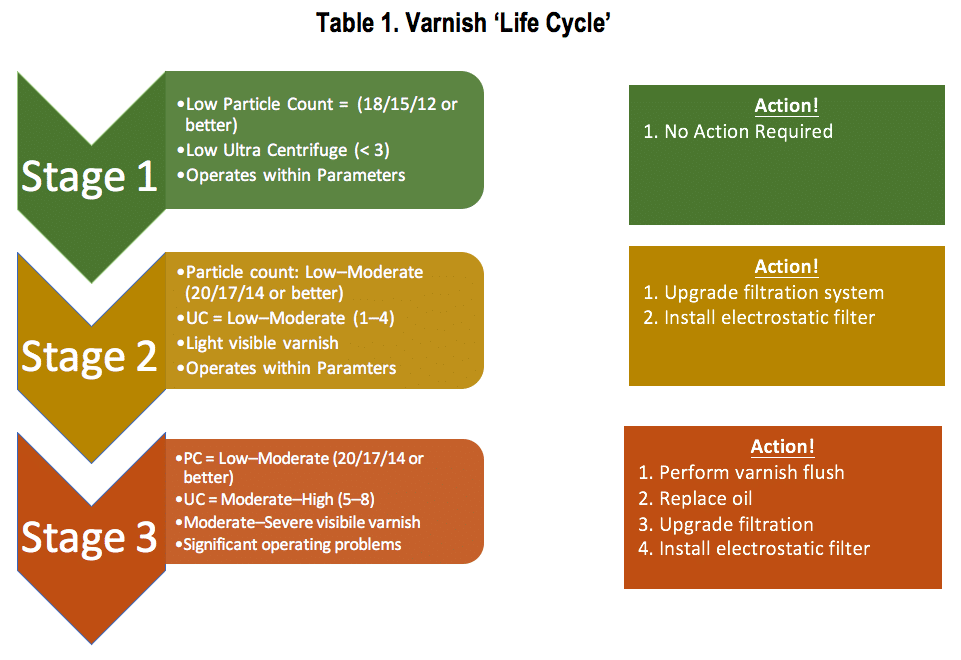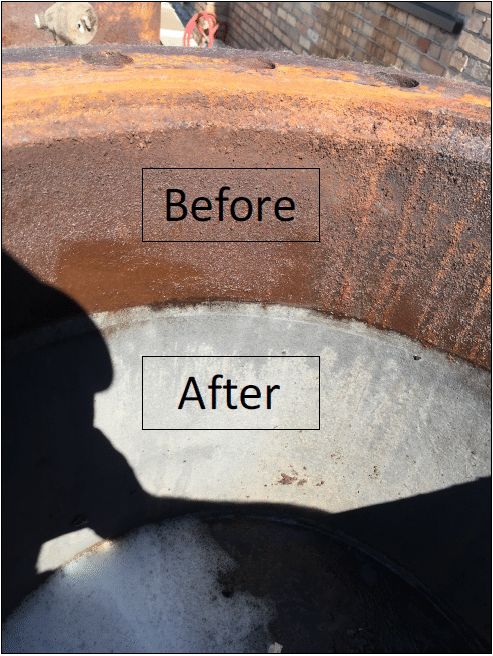Are plugged filters and sticking servo valves causing downtime and repairs and costing you thousands of dollars?
You might struggling to keep your equipment free of damaging particles formed by oxidation and Van Der Waal’s forces, also known as varnish. These particles, created from oxidation by-products in machine oils, can cause sticky servo valves and plugged filters, unnecessarily shutting down your otherwise healthy equipment. However, there are steps we can take to reduce varnish and reduce the frequency of these problems.
Varnish Detection and Removal
Monitoring and maintaining your equipment is key in detecting and removing varnish buildup, and ensuring your turbine equipment operates effectively and efficiently. Routine testing will help determine the level of buildup and alert you to when you need to perform the varnish removal process. Table 1 shows the varnish ‘Life Cycle,’ which can be helpful when determining the severity of varnish deposits.

Varnish Removal Techniques
Depending on the level of varnish in your system and the types of equipment involved, different removal techniques may be appropriate. The four most common methods are listed below with their basic strengths and weaknesses. Of course, we recommend consulting a professional preventive maintenance company before selecting your final strategy or attempting to clean the system yourself. Critical equipment can be severely damaged if varnish removal is not handled correctly.
- Balance Charge Agglomeration, or BCA – Made for industrial applications, easy filter changes, leaves “no charge” on system fluid and approved by GE. If done with standard electrostatic charge plates, it can be difficult to open and properly clean the plates.
- Depth Media Filters – Can be used to filter out varnish pre-cursors for cooler temperature applications, but will not addressing pre-existing varnish coatings.
- Electrostatic Filtration – Great for continuously removing submicron varnish precursors, but not as effective with significant amounts of existing varnish. Always the preferred method for gas turbines.
- Ionic Charge Bonding, or ICB – This is another highly effective filtration technology. ICB elements significantly reduce production losses and resolve servo-valve issues by eliminating the contamination responsible for sticking or sluggish valves. However, they do not address pre-existing varnish coatings.
- Full Varnish Flush Services – This technique flushes your entire system with a high detergent/dispersant additive, dissolving varnish throughout all components. The advantage of this approach is that varnish throughout your entire system is removed, quickly and efficiently, and there is minimal mechanical work. The downsides are that the turbine oil must be replaced after the flush and detergent levels must be carefully calculated for systems with long-term oxidation issues.
Our experienced field experts are available to assist you with your varnish removal projects. PetrolinkUSA proudly partners with our clients to ensure equipment operates as effective and efficiently as possible, and with minimal downtime.
For more information about our varnish removal services, visit our services page or call 1-800-770-4510.
